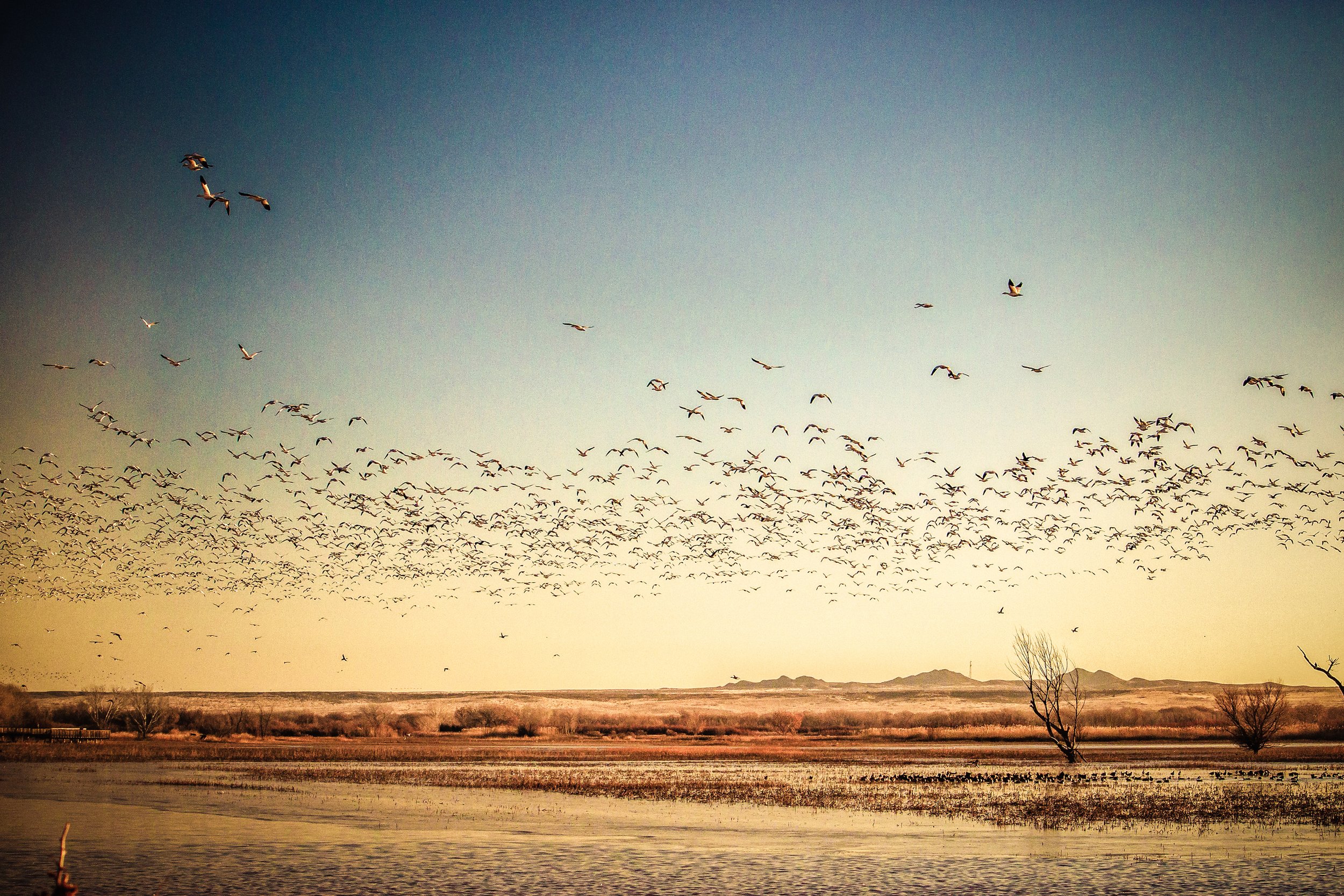Homeschool Field Trip: Birdwatching in New Mexico
Winter is prime birdwatching season at Bosque del Apache National Wildlife Refuge in New Mexico, when geese, cranes, and other winged wonders fill the sky at the beginning and end of each day.
Photo by Alex Briseño via Creative Commons
There’s not really a bad time for birdwatching at the Bosque del Apache, but you will find the greatest concentration of avian inhabitants at the refuge between November and mid- February. The sandhill cranes— exotic birds with gangly legs and dramatic six-foot wingspans—are home for the winter, and watching them take off together in flight as the sun rises and settle back down to the water in an angular ballet at sunset, gleefully squawking their staccato songs, makes for some of the most mag- ical birdwatching you’ll ever do.
The Bosque del Apache in Socorro, New Mexico (about an hour and a half drive south of Albuquerque and just eight miles from San Antonio) is an ecology story with a happy ending. When the refuge was established seventy years ago, only seventeen long-limbed sandhill cranes wintered here. Today, thanks to carefully established habitats and water management, more than 15,000 cranes — not to mention snow geese, Canada geese, hawks, eagles, blackbirds, crows, roadrunners, herons, spar- rows, grebes, and coots — call the preserve home, along with occasional reptiles, amphibians and mammals, such as mule deer, coyotes, and jackrabbits. (Check at the visitor center for a list of what wildlife rangers and visitors have recently spotted in the park.)
Arrive before sunrise for the best view of cranes taking flight. (Bundle up — those early mornings get chilly.) You’ll see lots of people at the Flight Deck, but if you keep driving 30-ish yards down the road, you’ll get a private show. Don’t race off after the first dramatic flight; if you stick around, you’ll see the late risers splashing in the water before spreading their wings to launch into the sky.
Afternoon is the perfect time to explore the refuge on foot. The three-mile Canyon National Recreation Trail has great habitat views, and you can settle in for some serious birdwatching at the Phil Norton Blind on the Farm Loop, where birds hunt in the surrounding fields. If you don’t feel like hiking, drive the 12-mile Wildlife Drive loop that circles the refuge; pull over to check out sights that strike you.


